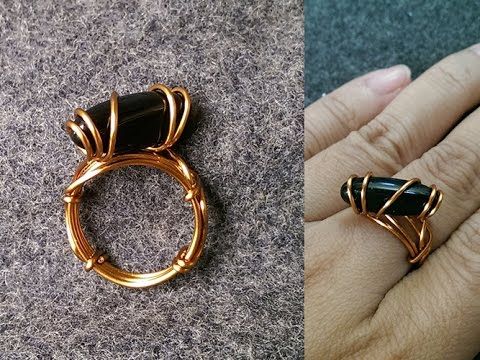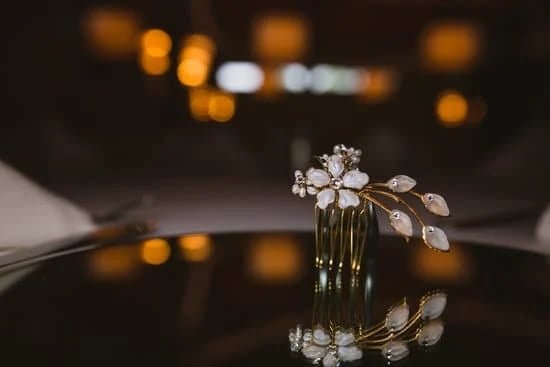The history of bone jewelry dates back to ancient civilizations, where bone was used to create ornamental pieces that held significant cultural and symbolic meanings. From early human societies to modern fashion trends, bone jewelry has continued to evolve and captivate people with its unique properties and designs. This article delves into the rich history and cultural significance of bone jewelry, exploring its origins, symbolism, evolving techniques, and the rise of ethical and sustainable practices in the industry.
Bone has been utilized in jewelry making for centuries due to its versatile nature and durability. It has been a material of choice for crafting intricate and meaningful pieces that reflect the beliefs and traditions of different cultures. Through examining ancient bone jewelry from various civilizations, we can gain insights into the artistic expressions, rituals, and societal values that have shaped the use of bone as an adornment throughout history.
As we embark on this exploration of bone jewelry, we will uncover not only the technical aspects of working with bone but also its symbolic significance as an integral part of cultural identity. From traditional techniques to contemporary designs, bone jewelry continues to fascinate enthusiasts and collectors alike, offering a glimpse into the timeless artistry and craftsmanship that transcends generations.
The Use of Bone in Jewelry Making
Bone has been used in jewelry making for centuries, valued for its unique properties and versatility as a material. The use of bone in jewelry making can be traced back to ancient civilizations, where it was often utilized due to its abundance and ease of carving. The material has withstood the test of time, remaining a popular choice for artisans and designers seeking to create distinctive and meaningful pieces.
Properties of Bone as a Material
One of the key properties that make bone an attractive material for jewelry making is its durability. When properly cared for, bone jewelry can last for generations, making it an enduring choice for heirloom pieces. Additionally, bone is lightweight and comfortable to wear, making it ideal for creating statement pieces that are easy to adorn on the body.
Versatility in Design
Bone’s natural color, ranging from creamy whites to rich browns and greys, allows for a wide range of design possibilities. Whether carved into intricate shapes or polished into smooth beads, bone can be transformed into diverse forms that suit various aesthetic preferences. Its earthy and organic appearance also adds a rustic charm to jewelry designs.
Sustainability and Ethical Considerations
In recent years, there has been a growing awareness of the ethical and sustainable aspects of using bone in jewelry making. As a natural byproduct of animal agriculture or from naturally deceased animals, using bone in jewelry production can be seen as a way to repurpose resources that might otherwise go to waste.
Additionally, ethically sourced bone ensures that no animals were harmed specifically for their bones, aligning with the principles of ethical and sustainable fashion practices. This consideration has led to the rise of ethical and sustainable bone jewelry within the fashion industry today.
Ancient Bone Jewelry
Bone jewelry has a long and rich history, with evidence of its use dating back to ancient civilizations. In many ancient cultures, bone was readily available and easily worked into various shapes and designs, making it a popular choice for adornment. Let’s explore the history of bone jewelry in different ancient civilizations.
1. Ancient Egypt: The use of bone in jewelry was prevalent in ancient Egypt, where both men and women adorned themselves with bone necklaces, bracelets, and amulets. These pieces often featured intricate designs and were considered symbols of status and protection.
2. Ancient Mesopotamia: In Mesopotamia, bone jewelry was also widely used, with artisans creating elaborate pieces using techniques such as carving and inlaying. These items were not only worn for aesthetic purposes but also held religious and symbolic significance.
3. Ancient Greece: Bone jewelry was popular among the ancient Greeks, who incorporated bones from animals such as deer and boars into their designs. These pieces were often adorned with symbols representing gods and goddesses, showcasing the spiritual beliefs of the time.
The history of bone jewelry is a testament to the creativity and artistry of ancient civilizations, showcasing how they utilized natural materials to create beautiful adornments that held deep symbolic meaning. Today, these ancient traditions continue to inspire modern designs, as artisans draw inspiration from the past while incorporating contemporary techniques and ethical practices in their creations.
Symbolism and Meaning
The history of bone jewelry is deeply intertwined with the cultural and symbolic significance of this ancient adornment. Across various civilizations and cultures, bone jewelry has held different meanings, often representing power, protection, and connection to the divine. In many indigenous communities, the use of bone in jewelry making is a way of honoring and connecting with ancestors, as well as a means of harnessing the spiritual properties believed to be imbued in bones.
In ancient cultures such as the Egyptians, bone jewelry was often seen as a symbol of protection and strength. The use of bones from animals such as crocodiles or hippos carried significant meaning, as these creatures were revered for their power and ferocity. Similarly, in Native American traditions, bone jewelry held spiritual significance, often used in rituals and ceremonies to connect with nature and honor the earth.
It is important to recognize that the cultural significance of bone jewelry varies widely across different societies. For example, in some Asian cultures, particularly in Tibet and Nepal, bones from revered animals such as yaks are used to create intricate jewelry pieces that are believed to hold protective qualities.
This reflects a deep respect for animals and their role in sustaining human life. Overall, the symbolism and cultural significance of bone jewelry serve as a testament to the enduring connection between humanity and natural materials throughout history.
| Meaning | Cultural Significance |
|---|---|
| Bone jewelry | Ancient adornment |
| Symbolism | Represents power & protection |
| Cultural Variations | Vary across different societies |
Evolution of Bone Jewelry
Bone jewelry has a rich and fascinating history that dates back to ancient times. From the early use of bones as adornments by our ancestors to their continued presence in modern fashion, the evolution of bone jewelry showcases its enduring appeal and cultural significance.
Throughout history, bone has been utilized by various civilizations for the creation of jewelry. This versatile material was not only readily available but also held symbolic and spiritual significance in many cultures. Ancient societies such as the Egyptians, Native Americans, and Vikings used bone to craft intricate ornaments and accessories, reflecting the artistry and craftsmanship of their respective eras.
As time progressed, the use of bone jewelry evolved alongside changing fashion trends and cultural influences. In ancient times, bones were often carved or shaped by hand to create unique pieces with symbolic meanings. However, with advancements in technology and design, contemporary artisans have incorporated modern techniques such as laser-cutting and 3D printing to push the boundaries of bone jewelry design.
The evolution of bone jewelry has also seen a shift towards ethical and sustainable practices in the fashion industry. With increasing awareness of environmental conservation and ethical sourcing, there has been a rise in the demand for ethically sourced bone materials.
This has led to the development of sustainable bone jewelry that promotes responsible production methods and supports local communities. As we continue to appreciate the beauty and cultural significance of bone jewelry, it is important to recognize its evolution from ancient traditions to modern ethical practices within the fashion industry.
- Ancient civilizations such as Egyptians, Native Americans, and Vikings used bone for creating intricate ornaments
- Contemporary artisans have incorporated modern techniques like laser-cutting & 3D printing into bone jewelry design
- The rise in demand for ethically sourced materials has led to sustainable production methods in creating bone jewelry
Techniques and Designs
Bone jewelry has a long and rich history that spans across various ancient civilizations. The techniques and designs used in creating bone jewelry are a reflection of the craftsmanship and creativity of these cultures. From traditional methods passed down through generations to contemporary innovations in design, bone jewelry continues to be a fascinating and versatile art form.
Traditional Techniques
Throughout history, bone jewelry has been crafted using traditional techniques such as carving, engraving, and shaping. In many ancient civilizations, artisans would painstakingly carve intricate designs onto pieces of bone, creating stunning works of art that were both decorative and symbolic. These traditional techniques often required specialized tools and skills that have been honed over centuries.
Contemporary Designs
In the modern era, bone jewelry continues to evolve with innovative designs that appeal to a wide range of tastes and preferences. Contemporary artists and designers have found new ways to incorporate bone into their creations, whether it’s through experimenting with different finishes, incorporating other materials, or using advanced technology for precision cutting and shaping. This fusion of tradition and innovation has led to the creation of unique pieces that are both timeless and on trend.
Combining Tradition and Innovation
One notable trend in contemporary bone jewelry is the fusion of traditional techniques with modern design concepts. Many artisans now combine age-old carving methods with contemporary motifs or styles, resulting in pieces that pay homage to the history of bone jewelry while also appealing to present-day sensibilities. This blending of old and new not only showcases the versatility of bone as a material but also highlights its enduring appeal across different cultures and time periods.
As we continue to explore the world of bone jewelry, it becomes evident that the techniques and designs used in creating these pieces hold a significance rooted deep within history while continuing to inspire creativity in today’s fashion landscape.
Bone Jewelry in Different Cultures
Bone jewelry has a rich and diverse history, with evidence of its use dating back to ancient civilizations across the globe. From the Maori people of New Zealand to the indigenous tribes of North America, bone jewelry has been a significant part of cultural expression and tradition. The use of bone in jewelry making has varied widely, with different cultures attributing unique significance and value to these pieces.
In many cultures, bone jewelry is not merely an accessory, but rather a symbol of religious or spiritual beliefs. For example, among the Maori people, bone and jade jewelry known as “tāonga” holds great cultural significance and is often passed down through generations as heirlooms. Similarly, in various Native American tribes, bone jewelry such as necklaces and bracelets are adorned with symbols that represent spiritual concepts or important life events.
Furthermore, the value placed on bone jewelry is not just limited to its cultural or spiritual significance. In some traditional societies, bone jewelry also serves as a form of currency or wealth. For instance, in certain parts of Africa, intricately carved bone beads were historically used as a means of trade and exchange. This dual role of bone jewelry as both a cultural symbol and a valuable commodity highlights its enduring importance in various global contexts.
| Aspect | Information |
|---|---|
| Cultural Significance | Bone jewelry represents religious or spiritual beliefs in many cultures such as the Maori people and Native American tribes. |
| Economic Value | In certain traditional societies like parts of Africa, intricately carved bone beads served as a form of currency or wealth. |
The Rise of Ethical and Sustainable Bone Jewelry
In conclusion, the history of bone jewelry reveals a fascinating journey through different ancient civilizations and cultures, highlighting its symbolic and cultural significance. From its use in rituals and ceremonies to its representation of status and identity, bone jewelry has been deeply ingrained in human history for centuries. As we trace the evolution of bone jewelry from ancient times to modern fashion trends, it becomes evident that ethical and sustainable practices are becoming increasingly important in the industry.
The rise of ethical and sustainable bone jewelry reflects a growing awareness of environmental and ethical concerns within the fashion industry. With consumers seeking out products that are both stylish and responsibly sourced, designers and artisans are embracing ethically sourced materials and sustainable production methods. This shift towards sustainability not only benefits the environment but also supports local communities where bone jewelry craftsmanship has been a traditional art form for generations.
As we consider the techniques and designs used in creating bone jewelry, it is important to recognize the efforts being made to ensure that these practices are both environmentally friendly and socially responsible. By prioritizing ethical sourcing, fair labor practices, and eco-friendly production processes, the fashion industry is setting a precedent for the future of bone jewelry.
The growing trend of ethical and sustainable bone jewelry presents an exciting opportunity to celebrate cultural heritage while also embracing a more conscientious approach to fashion.
Frequently Asked Questions
What Is the Significance of a Bone Necklace?
A bone necklace can hold great significance in various cultures and traditions. For some, it could symbolize a connection to the earth or nature, while for others, it may represent protection or spiritual beliefs. The type of bone used and the design of the necklace can also affect its significance.
Is It Legal to Sell Bone Jewelry?
The legality of selling bone jewelry depends on the specific laws and regulations of the region or country. In many places, it is legal to sell bone jewelry as long as the bones are sourced ethically and legally. However, there may be restrictions on certain types of bones or materials from protected species.
What Do Bone Beads Symbolize?
Bone beads can symbolize different things in different cultures. In some traditions, bone beads may represent strength, protection, or spirituality. They can also be used in rituals or ceremonies to convey certain meanings or intentions based on their cultural significance.

Welcome to my jewelry blog! My name is Sarah and I am the owner of this blog.
I love making jewelry and sharing my creations with others.
So whether you’re someone who loves wearing jewelry yourself or simply enjoys learning about it, be sure to check out my blog for insightful posts on everything related to this exciting topic!





